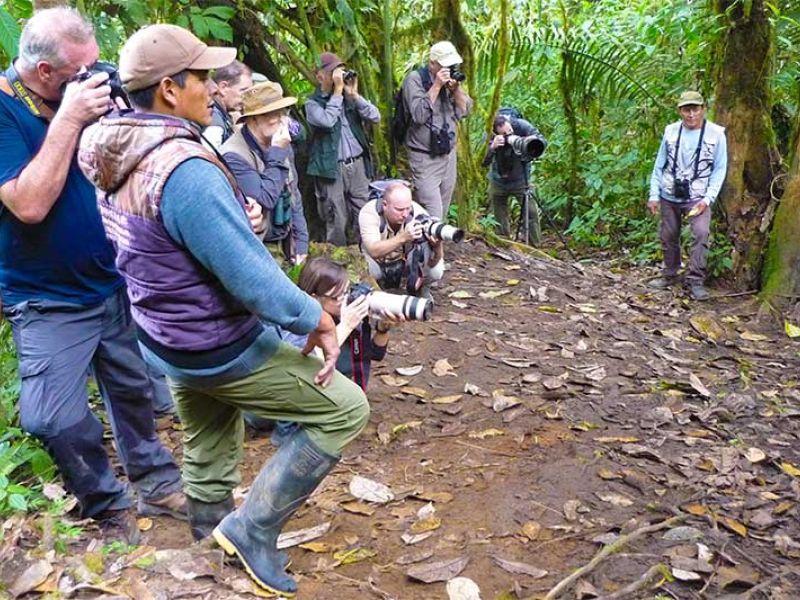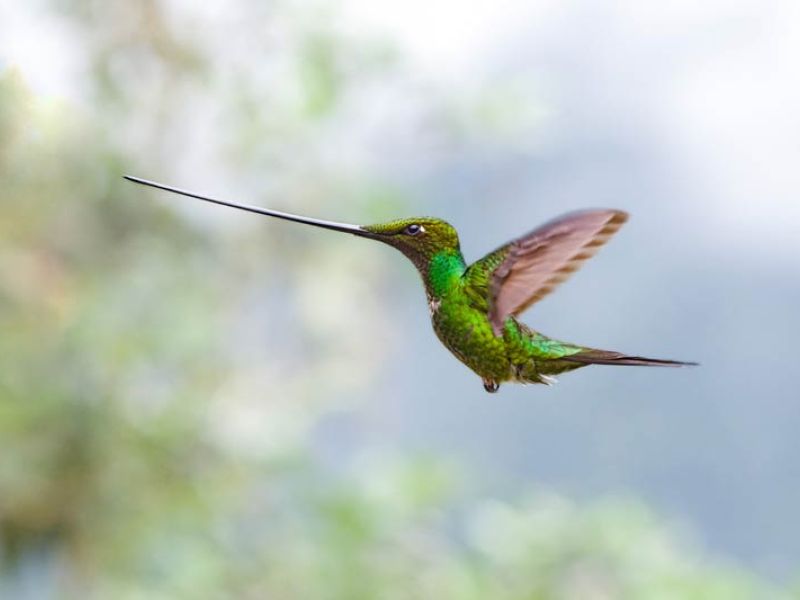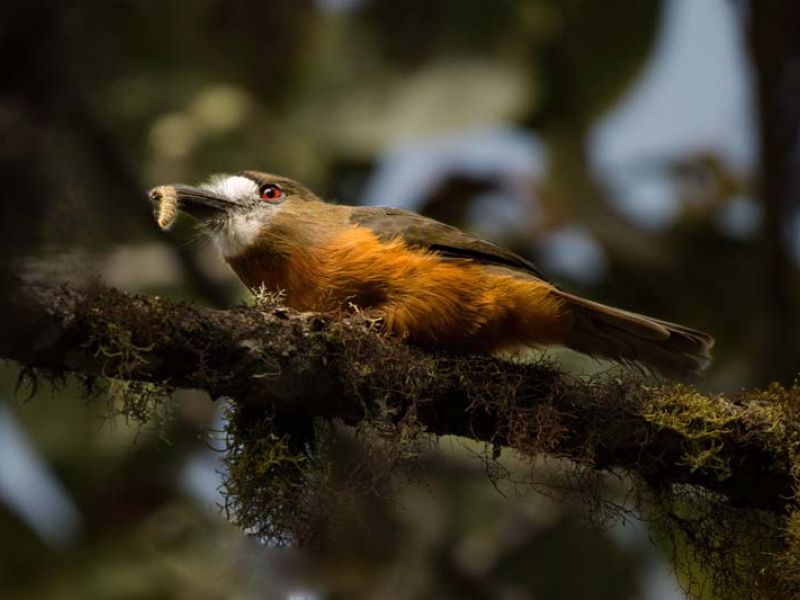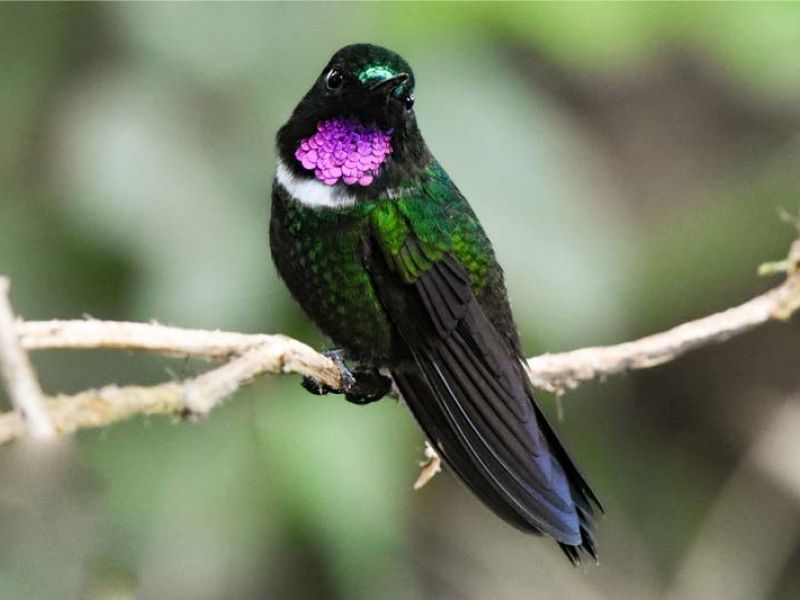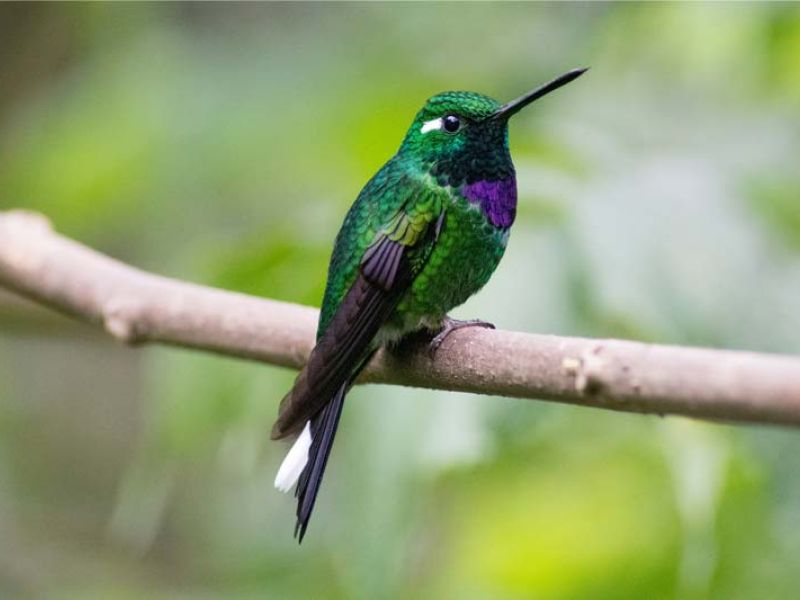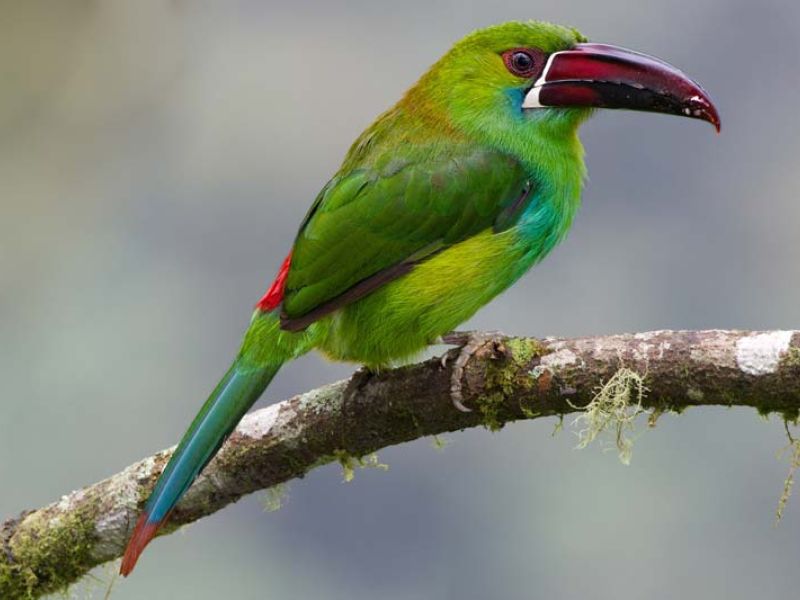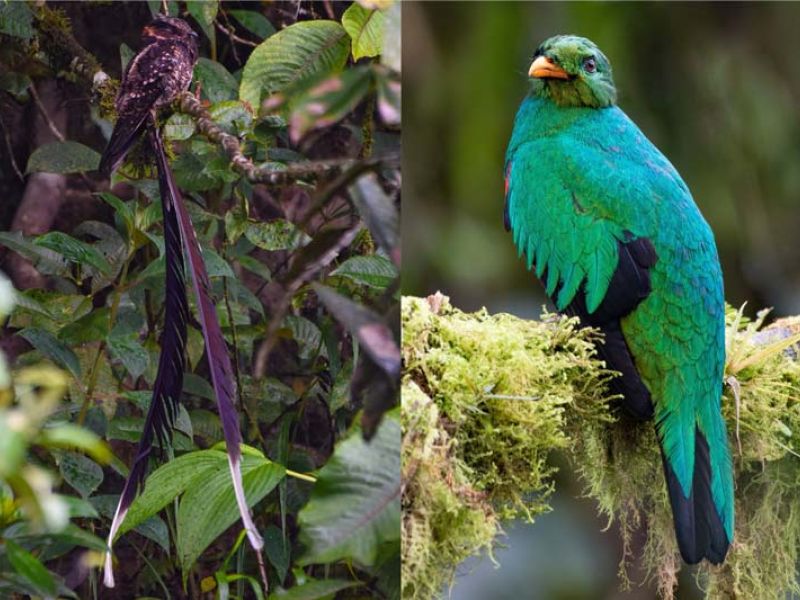Tour Information
Birding adventure-high Andes & Choco region of Ecuador: eight days, eight nights.
The Ecuadorian Choco bioregion is home to a stunning variety of wildlife and plants, many of which can only be found within the Northwest birding trail. This encompasses a wide variety of habitats, from the temperate forests of Yanacocha to the lowlands of the Rio Silanche Bird Sanctuary, and the cloud forests of Mindo Tandayapa.
Day 1:
Our journey starts in Quito, the capital of Ecuador.
Your guide will meet you at the airport, and, after a short introduction, you will be transferred to the "Casa del Viajero" in Pifo for dinner and overnight, this beautiful hotel is located fifteen minutes away.
Day 2:
We are off to an early start to make the most of our wildlife viewing experience, departing at 5:00 AM to Zuro Loma, a new reserve in the High Andean and elfin forest, arriving at Zuro Loma around 7:30 am for a delicious local breakfast and coffee.
Zuro Loma is a birder's paradise, where we can see an extensive variety of species; the Equatorial, Chestnut-naped Antpitta and Barred fruiteater await for us, and may also see the magnificent Ocellated Tapaculo.
Numerous hummingbird feeders about the reserve attract Sword-billed Hummingbirds, Tyrian Metaltail, Sapphire and Golden-breasted Pufflegs, Black-tailed Trainbearer, and Mountain Velvetbreast, the beautiful Red-crested Cotinga, and the Scarlet-bellied Mountain Tanager show up around at close distance.
After a few hours of birding, we will travel for 30 minutes up to Yanacocha, located on the west slopes of Pichincha. This is one of many reserves run by Jocotoco Foundation to protect critically endangered species like Black-breasted Puffleg, here we will take an easy nature walk through the reserve. Yanacocha, located in the slopes of Pichincha, offers mixed flocks with Pearled Treerunners, Hooded and Black-chested, mountain-tanagers, Spectacled Redstart, Supercilaried Hemispingus, Bar-bellied Woodpeckers, White-throated Tyrannulets, Blue-backed Conebill, and Andean Pygmy Owls. The feeding stations also attract a number of avian visitors, like the Great Sapphirewing and Shining Sunbeam.
We will enjoy lunch at Yanacocha with its views of the gorgeous landscape. After lunch, we will continue to the cloud forest, travelling along a very famous Eco-route, Paseo del Quinde. Along the route, we will make stops to look for the Plain-tailed Wren, Black-crested Warbler, Slaty-backed Chat-Tyrant, Andean Guan, and White-capped Dipper.

Day 3:
At 6:00 AM, we continue our birding adventure at Bellavista lodge on some of the easier walking trails, looking for Blue-winged Mountain-Tanager, White-tailed Tyrannulet, Capped Conebill, Beryl-spangled Tanager, Masked Flowerpiercer, and Chestnut-capped Brushfinch, followed by breakfast at the lodge.
We continue exploring the beautiful and magical cloud forest of Bellavista, interspersed with short trips by car to some marvelous viewpoints. Now we will be looking for White-throated Quail-Dove, Plate-billed Mountain-Toucan, Gorgeted Sunangel, Collared Inca, Grass-green Tanager, Toucan Barbet, White-faced Nunbird, and Plushcap.
After lunching at the lodge, we continue to either the Tandayapa Valley or the upper San Luis area to seek out the Tanager Finch, an emblematic bird of the cloud forest, Strong-billed Woodcreepers, White-winged and Tricolored Brushfinch, Gray-breasted Wood-Wrens, Slate-throated Redstart, Golden-naped Tanager, and perhaps the unique Crested Quetzal. Later in the afternoon, we will also try to spot Swallow-tailed Nightjars along the road.
We round out the day with dinner and overnight accommodations at the Sachatamia Lodge.

Day 4:
Shelter, "Paz de las Aves".
Another full day of birding begins with a 5:30 AM start as we travel to the Antpittas sanctuary. Six different species are registered in the reserve, including the magnificent Andean Cock-of-the-rock, who will regale us with an intriguing courtship display. Afterward, we will take some short walks with Angel and Rodrigo, the owners of the reserve. They have pioneered a unique hand feeding technique that has revolutionized birding, and are important figures in the South American birding community. Some key birds at this refuge are Dark-backed Wood-Quail, Chestnut-crowned, Yellow-breasted, Giant, Mustached and Ocher-breasted Antpittas.
The refuge is also a prime spot to look for the Olivaceous Piha.
After a couple of hours of birding, we will be served a delicious local breakfast of green plantain bolones, empanadas and the best coffee, a not to be missed experience in Ecuadorian cuisine! The restaurant also has a number of hummer feeders that attract Empress Brilliant, Velvet-purple Coronet, Brown Inca, White-throated Daggerbill and the unique Booted-racket Tail, adding to the restaurant's natural ambiance. Nearby banana feeding stations attract Crimson-rumped Toucanet, Flame-faced and Golden-naped Tanager and many other jewels from the Neotropics.
After breakfast, we will spend the rest of the morning checking the trails again to catch any species that we have not yet seen. We then drive to the nearby Alambi Hummingbird Paradise for lunch.
Alambi is home to 10 to 20 different hummingbird species and colorful tanagers. Frequent visitors are Western Emeralds, White-wiskered Hermits, Purple-throated Woodstarts, Crowned Woodnymph, The nearby Alambi river is also a very good place to look for White-caped Dipper, Torrent Tyrannulets, and the enigmatic Torrent Duck.
We then travel to the Sachatamia Lodge for dinner and to our overnight stay.

Day 5:
The bizarre Umbrella bird and Milpe Sanctuary.
We leave from Sachatamia at 5:00 AM to the foothills of the Andes, where "23 de Junio" Reserve is located. This is definitely the best place to search for the unique and bizarre Long-wattled Umbrellabird, and witness the males in their dawn courtship display on the top of the hill. Even in the dawn light, you will be able to see several males singing and pumping up their bizarre wattles. We will also look for Black-chinned Mountain Tanagers, Cloud-forest Pygmy-Owls, Yellow-collared Chlorophonia, and, with luck, see Ornate-hawk Eagles perched nearby. After watching some lifers, we return to the car and travel to the Milpe Bird Sanctuary, part of Mindo Cloud Forest Foundation, which promotes forest restoration and conservation.
As we break for lunch at Milpe, we will be again surrounded by hummingbirds, such as Green Thorntails, White-whiskered Hermit and Green-crowned Brillants. After lunch, we will continue birding along short and easy trails, looking for Choco Toucans, Lineated Woodpeckers, Collared Trogons, White-bearded Manaking, White-wiskered Puffbird, Purple-crowned Fairy, Bicolored Antbird, Slaty Antwren, Esmeraldas Antbird, Pallid Dove, Spotted Nightingale-Thrush, and Rufous-fronted Woodquail. We continue exploring this beautiful ecosystem looking for the elusive Club-winged Manakin, using its raucous and distinct mating sounds to locate them. Males produce astonishingly loud beeps by vibrating their feathers at incredibly high speeds, which help to locate their display spot in the dense forest understory.
Depending on weather conditions, we will then explore the road outside Milpe, just before dusk, hopefully seeing mixed flocks of Plain Xenops, Cinnamon Becard, Wedge-billed Woodcreeper, Buff-fronted and Scaly breasted Foliage-gleaner, Plain-brown Woodcreeper, Golden-bellied Warbler, Spotted Barbtail, Russet Antshrike, Olivaceous Piculet, and Grey-and-gold Tanagers,
Lastly, before dinner, we will attempt to spot both Crested Black-and-white Owls near the parking site.
Overnight and dinner at Sachatamia Lodge.

Day 6:
We depart from Sachatamia Lodge at 5:00 AM to Rio Silanche and Rancho Suamox, this time to explore the Chocó-lowland Rainforest of the Western Andes Foothills. Here is another great spot to search for other Choco specialities from our viewing space atop a canopy tower, looking for Moustached/Griscom’s Antwren, Stub-tailed Antbird, Black-tipped Cotinga, Slate-throated Gnatcatcher, Blue-tailed Trogons, Dusky Pigeon, Orange-fronted Barbets Scarlet-breasted Dacnis, Gray-and-gold Tanagers, Choco Tyrannulet, Guayaquil Woodpecker, Barred Puffbird, and Choco Toucans.
After enjoying a packed lunch, we move to the next birding spot in Rancho Suamox. Rancho Suamox is the ideal location to look for the elusive Brown Wood-rail, a new visitor to the area. In addition, the feeders here attract Dusky-face Tanagers, Black-cheeked Woodpeckers, Silver-throated Tanagers, and Purple-chested Hummingbird.
Overnight and dinner at Sachatamia Lodge.

Day 7:
We leave from Sachatamia Lodge at 5:00 AM to Mashpi Amagusa Reserve and Oildbird Cave towards Quito.
We will check a moth-trap feeder near Amagusa entrance, focusing on spotting Black Solitaires, Broad-billed Motmots, Bronze-olive Pygmy-Tyrants, and hopefully the Rufous-brown Solitaire.
Breakfast will be in Amgusa, followed by a short walk along a secondary road looking for Buffy Tuftedcheeks, Orange-breasted Fruiteaters, White-throated Daggerbills, Rufous-rumped Antwren, Indigo Flowerpiercer, and Uniform Treehunter, We then move to the feeding stations in Amagusa, an incredible area for photography. Many varied tanagers can be seen, among them being Glistening-green, Moss-backed, Rufous-throated, and Black-chinned Mountain-Tanagers.
There are also great opportunities to photograph the Violet-tailed Sylph, Empress Brilliant and Velvet-purple coronet jewels of the Chocó bioregion.
We remain at Amagusa for lunch; while we enjoy our meal, hopefully the gorgeous Rose-faced Parrot may show up by the banana trees nearby. After lunch we drive to the town El Chontal to see the bizarre and nocturnal Oilbird, a long drive, but worth the trip. The roosting caves at El Chontal allow us to see more than a dozen individuals on the rocky walls.
Time permitting, we may stop by another small reserve to try to encounter additional species on our way to the hotel.
Dinner and overnight at "Hotel Casa del Viajero" in Pifo.

Day 8:
Antisana National Park and Tambo Condor.
Leaving from Hotel Casa del Viajero at 5:30 AM, we will travel to Antisana, home of the largest population of Andean Condors, the emblematic bird of Ecuador. We will drive towards the western highland plains and paramo ecosystems, checking the Condor’s roosting and nesting cliffs. Most of the birding will be by car, driving slowly along stunning landscapes and majestic volcanoes, viewing Andean Ibis, Carunculated Caracaras, Paramo Pipits, and Chestnut-winged Cinclodes. In addition, this reserve is the ideal place to search for the Ecuadorian Hillstar, a hummingbird endemic to Ecuador.
Depending on weather conditions, we may also take a short walk to la Mica Lake to see Silvery Grebes, Andean Ducks, Andean Gulls, Plain-capped Ground Tyrants, Many-striped Canasteros, and Andean Tit-Spinetail. Afterward, we will look for Black-chested Buzzard-Eagles, Variable Hawk, and Andean Lapwings.
Lunch will be at Tambo Condor, which serves outstanding local Andean food, such as Locro de papas, trout, choclo, mellocos, habas con queso.
After lunch, we will check the restaurant hummer feeders, hoping to get photos of the Giant Hummingbird, along with Tyrian Metaltail, Shining Sunbeam, Eared Dove, and Black Flowerpiercer. We will also have another opportunity to view Condors, as the owner of Tambo Condor usually knows where they are perched on the cliffs in front of the restaurant.
Late afternoon, we will drive back to either your hotel to continue your stay in Quito or directly to the airport to your next destination, the Amazon Rainforest.

More Information
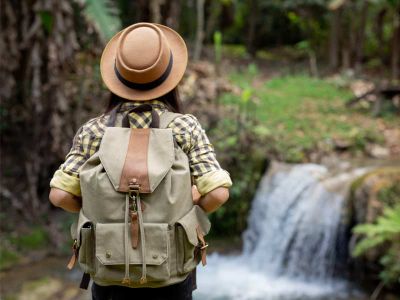
What does the trip include
• Airport transfers to and from UIO (International airport, Quito).
• Private transportation throughout the tour.
• English-speaking birdwatching and photography guide.
• Entrance fees to all reserves and photography hides.
• All meals from the first to the last day.
• Coffee, tea and purified water at all Lodges and reserves.
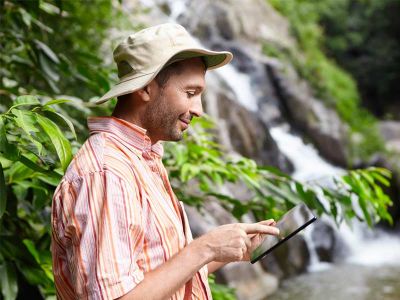
What is not included
• Travel insurance.
• Tips for drivers and local guides.
• Alcoholic drinks, laundry services.
• Extra services and trips not specified in the posted itinerary.
• International and local flights to Quito.

Relevant Information
• Climate is highly variable in Ecuador, with temperatures varying from 10-30°C, 50-80 ºF.
• Sudden rainstorms interspersed with bright sun are not uncommon.
• The official currency in Ecuador is the US Dollar.
• Internet is available at some lodges, but not guaranteed.
• Nature Quest can arrange for the purchase of local SIM cards with advance notice in order to provide data based internet service.

Sugested Packing List
• Clothing, quick dry material; no cotton.
• Long sleeve shirts.
• Long convertible pants.
• Waterproof hiking boots or trail runners.
• Sandals or water shoes.
• Quick dry / merino wool socks.
• Sun hat or baseball cap.
• Lightweight rain jacket.
• Soft shell jacket or fleece.
OTHERS: Camera, refillable water bottle, eco-friendly sunblock, eco-friendly mosquito repellent (we suggest sawyer brand picaradin), personal medications, hiking poles if needed.
